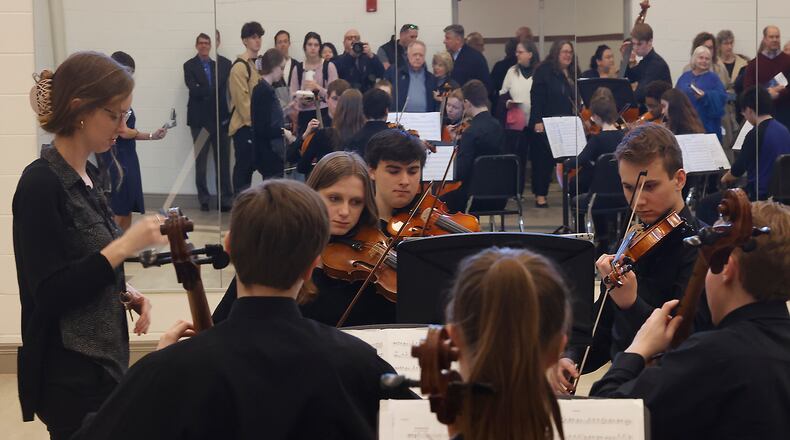U.S. News & World Report said they ranked public high schools schools on several weighted factors, most of them linked to standardized testing.
Their “state assessment” and “underserved student” measurements, accounting for a combined 50% of the ranking, are based on state test scores, both overall, and a look at how low-income and racial minority students performed.
Their “college readiness” and “college curriculum breadth” measurements, accounting for 40% of the ranking, are based on the proportion of 12th graders who took and earned qualifying scores on Advanced Placement (AP) or International Baccalaureate (IB) exams. Few local schools offer IB courses, and the number of AP classes varies widely among local districts, as some schools focus more on College Credit Plus offerings than AP.
The final 10% of the ranking is based on graduation rates.
There have always been debates about how to evaluate school success. Families choose schools based on a wide range of criteria, such as academics, special programs, safety, extracurriculars and housing/neighborhoods, depending on what is important to them. Which school is labeled “best” in any ranking will depend on which set of criteria is used.
Local schools’ rankings
Oakwood was listed sixth in U.S. News & World Report’s 2024 ratings of the top 100 high schools in the state. Mason (18), Waynesville (42), Bellbrook (43) and Kings (48) were the others in Greene, Miami, Montgomery and Warren counties that were ranked among the top 50, according to the magazine’s list.
“We are humbled and grateful that Oakwood High School was named one of the best in Ohio,” Superintendent Neil Gupta stated. “However, our true appreciation lies with our dedicated staff. Their unwavering commitment to student success transcends any ranking. ... While we acknowledge this honor, we remain focused on our mission to provide a quality education that prepares students for a future of limitless possibilities.”
Other area high schools in the top 100 of the magazine’s list include Springboro (59), Centerville (60), Tippecanoe (69), Bethel (70), Stivers (71), Brookville (87), Beavercreek (90), and Little Miami (94).
U.S. News noted that Oakwood “students have the opportunity to take Advanced Placement coursework and exams,” with a 70% participation rate at the school.
It ranked Oakwood as 265 in the country with a scorecard rating of 98%. OHS’s proficiency rating was highest in science (96%), reading (93%) and math (83%), according to the magazine.
State rankings, context
U.S. News rated Cincinnati’s Walnut Hills first, followed by Bexley (Columbus area), Madeira (Cincinnati), Solon and Rocky River (Cleveland) in the top five.
Education analysts often point to the correlation between test results and wealth/poverty, and the same is true with the U.S. News ranking. Of the high schools U.S. News ranked as its top 30 in Ohio, 27 of them are in districts that rank in the top 7% of the state in median income, according to Ohio Department of Education data.
The biggest outlier, Ohio’s No. 1-ranked public high school, is Walnut Hills, a Cincinnati Public school that only admits students who score high on an entrance exam. That’s somewhat parallel locally to Stivers, a Dayton Public School that admits students in part based on auditions.
About the Author


